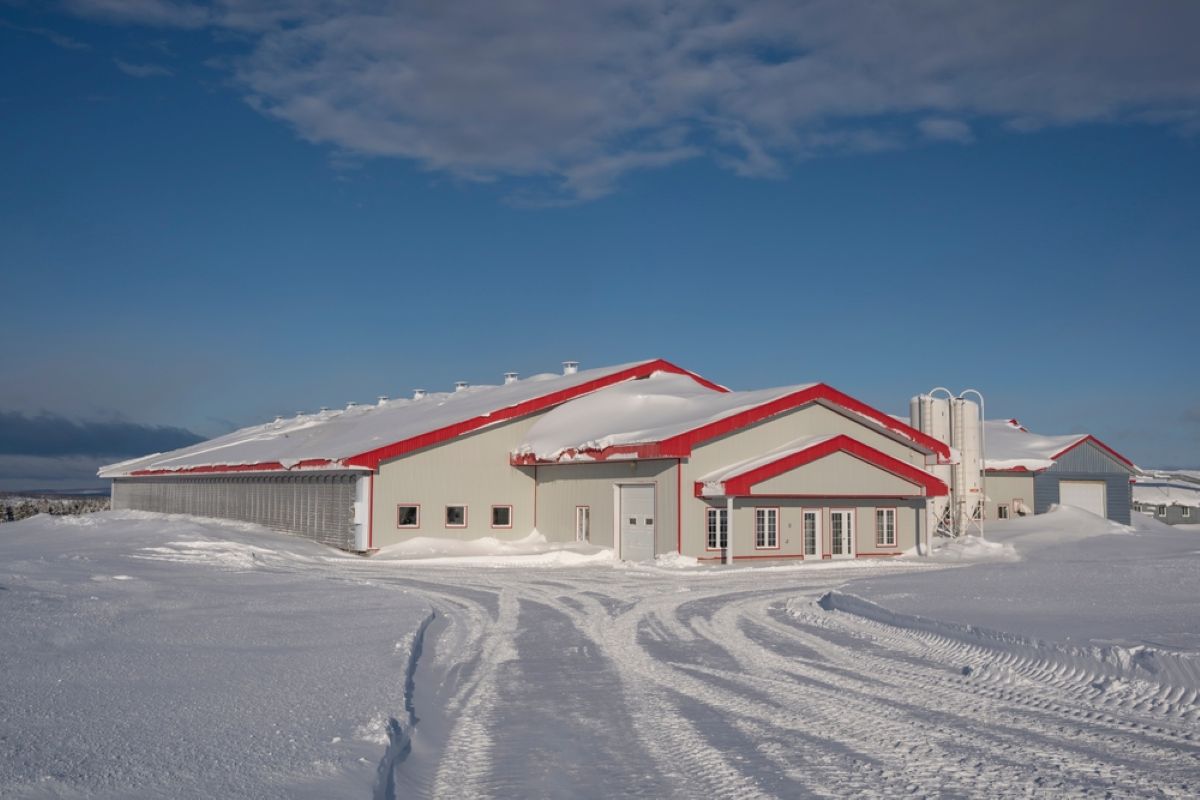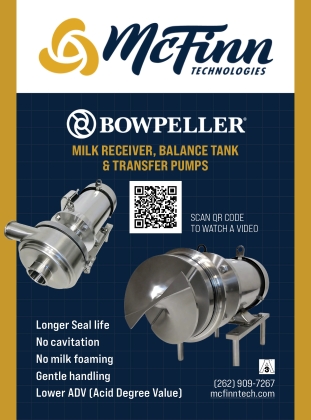Winterizing Dairy Equipment and Machinery

Winterizing Dairy Machinery and Equipment
Preventative equipment maintenance is fundamental to a smooth running dairy operation. Nowhere is that more evident than during the cold months. Machinery breakdowns and costly repairs can be a much bigger ordeal, and far more uncomfortable, in the winter than any other time of year. And one simple breakdown can cause a domino effect down the chain of daily operations leading to problems ranging from simple team frustration to serious herd health threats.
Unlike other animal ag industries, dairies run on similar schedules throughout the year, season in and season out. Lots of equipment needs to function during the coldest, roughest winter days to keep things running from milking to water to manure management.
Harvest Wrap-Up
Start preparing before the first frost. Once harvest wraps up, shift focus to the equipment that will sit through the cold months. Getting routine maintenance done on non-harvest equipment ahead of time alleviates post-harvest service overwhelm. There may still be some last minute checks before you close up the equipment shed, but the bulk of work should be handled early. Not only does this get tasks off your plate, it lets you rest easy knowing things should be nearly ready to roll out next season.
Equipment Specifics
For daily equipment and mechanics, give things a thorough check to identify weak spots or potential problems. Staying ahead of repairs avoids bigger issues when cold weather hits unexpectedly. Listed below are a few of the basics to tend on on the dairy.
Milking Equipment
Once you enter freezing temps, make sure you are keeping your lines and pipes regularly inspected in addition to the usual sanitation. Keep on top of vacuum pump lubrication and watch for signs of freezing. If you have any leaks anywhere, address them immediately and insulate exposed piping if necessary. If there are routine or problem solving service calls you’ve been holding out on, try to have them done quickly – you don’t want to wait until you’re facing a major squall or icy roads and can’t get a service rep out to the farm.
Keep your milkhouse in mind too. Do you have backup plans should you lose heat and power? Are your generators (and power take offs and fuel to power them) all ready to go?
Water Systems
As with your milking equipment, be sure to insulate pipes and drain unused waterers. Check to make sure that your electric heater arsenal (including those built into troughs) is functional. Remember that any leaks, even if they are quite small, will lead to pooled water that will turn into icy buildup quickly. Fix those in advance, prioritizing places where water is leaking into areas of high hoof and foot traffic.
Feed Equipment
Keep your mixers clean and lubricated. Give your silage storage (bags, driveover piles and silos) another check to make sure forages are sealed and ventilated properly.
Manure Handling
Clean and lubricate your skidsteers and scrapers. Insulate liquid manure tanks and check agitation systems.
Tractors and Other Machinery
Go through the usual winter maintenance checklist: change oil, check antifreeze levels and maintain proper tire inflation. Give special attention to batteries and terminals so they are charged and avoid freezing damages. Fuel stabilizers should also be added to stored equipment. Diesel engines should have a winterized blend to avoid gelling in the cold. Make sure you keep enough fuel in reserve for emergencies, enough at least for your generators and essential equipment. This is also a great time to inspect mechanical barn equipment like adjustable curtains.
Other Considerations
Beyond equipment, you want to make sure you have a stockpile of emergency winter supplies for operations and your team. This includes heaters in the milkhouse or office spaces, extra food and snowplow equipment to avoid and rescue stuck personal vehicles.
Do you have a plan with your milk hauler and buyer should there be an emergency and milk cannot be picked up for a period of time? Is your driveway clear enough for semis to not only get in, but also back up and maneuver safely? Are there markers in place with stakes or flags so driveway edges are identifiable?
While winter is hardly “down time” on the dairy, it is a good opportunity to keep on top of your recordkeeping. Not only is this good practice for office management, but it can also help you track routine maintenance and daily activities, to stay ahead of adverse weather conditions. Consistent monitoring also contributes to accountability and ensures preventative maintenance is maintained. This leads to peace of mind for those unexpected breakdowns that are sure to come.
By Jaclyn De Candio for American Dairyman
November 2025
More Cattle Information here:
If you enjoy the Outdoors, The Iowa Sportsman



